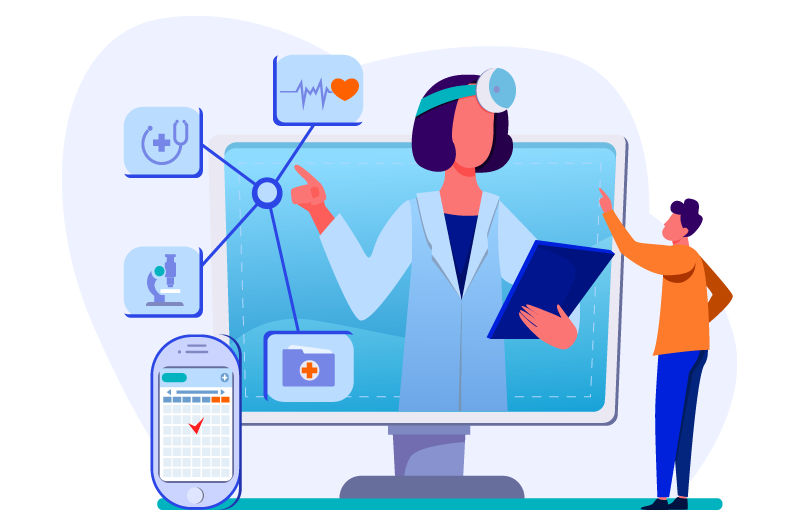Insurance is at the point in its journey with artificial intelligence (AI) where companies are seeking to understand the balance between AI systems, their human counterparts and their respective roles. This understanding is a necessity, say industry experts, a priority item that needs addressing.
In the Reuters Events webinar, Removing the ‘vs’ from ‘Human vs. AI’, panelists discussed how AI’s application is unique to each organization using it. It also has the potential to be transformational for business. That said, there is the thought among some that AI is coming to take jobs.
“AI is helping us better understand and better manage risk.” - Mano Mannoochahr
“Hammers didn’t come to take people’s jobs. No one viewed a hammer as a threat to their job, they viewed it as a tool,” says Sean Adams senior vice president of innovation design at California’s State Compensation Insurance Fund.
Instead, they say AI is helping companies to learn more about perils and has allowed underwriters to make better decisions. It also frees underwriters and claims adjusters up to ask questions they perhaps did not have time to address in the past. “AI is helping us better understand and better manage risk,” says Mano Mannoochahr, senior vice president and chief data and analytics officer at Travelers.
Claims and underwriting
AI was first put into use in the fraud space but has since been put into place in claims and underwriting at some companies. To provide an example, Mannoochahr described for the webinar’s audience, recent work in claims to respond to tornado damage in the United States.
“A couple of years back we would have been flying a little bit blind trying to understand where to deploy our workforce as claims come in,” he says. “But over the last year and a half or so, we have developed a deep machine learning model. As soon as these events happen, within a day, sometimes even the same day, we get high resolution imagery from the areas that are impacted. By the time nighttime comes around, we have processed hundreds of thousands of images and parcels looking for damage.” He adds that the model has the ability to classify the damages too, identifying everything from light damage to those buildings that are destroyed to their foundations.
“As our claim handlers come in in the morning, they usually have a plethora of information right in front of them,” allowing the company to focus field workforces in the right places. “As claims come in, claims handlers have the ability to pull up the image and see how the AI assessed the damage as it ran the night before.” He says this improves the customer experience, as the company is sometimes issuing a check before the client has even filed a claim. “It is just phenomenal in terms of what we’ve been able to achieve,” he says. “AI is helping us to do that.”
Detection and monitoring
He also encouraged webinar attendees to consider what it takes to underwrite a commercial building. The roof, he points out, can be a proxy for the overall condition of the building. “What we have done is developed a machine learning model that actually can detect and monitor individual commercial buildings that are coming up for renewal,” he adds.
“Let’s get rid of this adversarial perception that its either, or. Let’s work at getting people to understand that this is a tool that’s actually going to help.” - Sean Adams
In underwriting, Jim Sorrells, insurance executive and claims expert at Shift Technology says it is possible to take in new business, qualify leads differently, understand client personas in a different way and work to provide clients with a better product offering, all using AI’s assistance. He adds that how companies go about using AI to augment and drive decision-making is where differentiation is going to occur as the technology powers and enables decisions that are quick, more informed and more accurate.
He adds that availability of information allows companies to make different decisions in claims and underwriting too. “In underwriting, what you don’t know is the piece you’re chasing, right? If it exists, the AI can pull it in and make it available at short notice.”
Adams says the effort is a work in progress. “I believe it is getting the right people the right information at the right time,” he says. At the same time, AI can also be pressed into service automating the tasks that humans might currently do 20,000 times in a week. “That’s one area that AI can definitely help.”
Work in progress
When launching with an AI initiative, the experts say objectives need to be “crystal clear” upfront. “Are we trying to decrease cycle time? Are we trying to increase accuracy? Are we trying to remove stuff from the process? What exactly are we trying to do? And then, critically, what a lot of organizations miss is that feedback loop. Did we actually do that? Have we achieved the results we thought? It’s all iterative,” Adams says.
Interestingly, he adds that bringing AI into an organization is a good litmus test for how siloed an organization is. “You’re going to uncover your data silos. You’re going to find out, very quickly, how unified (your) data platform is,” he adds. If you have segregated data, if you have segregated teams, you’re going to run into that very early on.”
Ethics in AI
Ethics in AI, ensuring the technology is making the right decisions, not introducing new bias or failing to get rid of old biases, is also a work in progress. “Can we explain how that rating is working?” asks session moderator, founder and managing partner of Insurance Evolution Partners, Bryan Falchuk.
“These ethical fairness bias considerations are not going to go away. I do think that we could potentially solve them, or at least come to place as an industry where we feel comfortable, but it’s still a process right now. I don’t know if there’s an answer yet,” Adams says. “I think that’s one of the big reasons why we’re kind of late to the party, because there has been this difficulty explaining the decision-making process,” he adds. “We have to be able to describe that with a very high level of certainty. We’re still getting there. I think that’s going to be an obstacle that we can overcome.”
The human side of the equation
Managing the human side of the equation too, training, talent retention require that companies find a way to strike a balance. “Not everyone wants to be a manager. Not everyone wants to work on these really difficult, traumatic things 24/7; we need some variation. Have we thought about that? If we’re taking away lighter cases, are we giving the human side that chance to recover? It’s really fascinating and, of course, it’s going vary by person,” Falchuk says. “They’re interesting things, I don’t think we’ve ever thought about tackling as an industry.”
Seeing value in the data
Adams says once a company realizes it is sitting on a lot of value in the data it keeps, a shift within the organization begins to take place. “I think that’s one of the first indicators that an organization is ready for AI – they can look at data and see value,” he says.
Mannoochahr, meanwhile says an organization’s maturity, and where they are at in their journey with AI will determine how companies look at implementation. “It typically does start off as a separate team rallying around some strategic use cases, proof of concept type work,” he says. “But what we have learned over the course of the last few years is that it needs to be a team sport across all functions for us to not only build the models, but really get them integrated into our workflows, our transactional systems and get them into the frontlines. You really can’t do that in a silo. You have to partner closely with your business functions.” He adds that even before the company is done modelling, they are already testing with front line staff in some fashion. “There’s no question in my mind, it has to be an integrated approach.”
He adds that most AI use cases, with the exception of a few, have been focused on helping workers become more productive and improve customer and broker experiences.
“Let’s get rid of this adversarial perception that its either, or,” Adams agrees. “Let’s work at getting people to understand that this is a tool that’s actually going to help. Similar to smartphones, similar to computers, similar to the internet. All of these paradigm shifts that we’ve experienced professionally during our life,” he says. “It’s an interesting journey.”

















